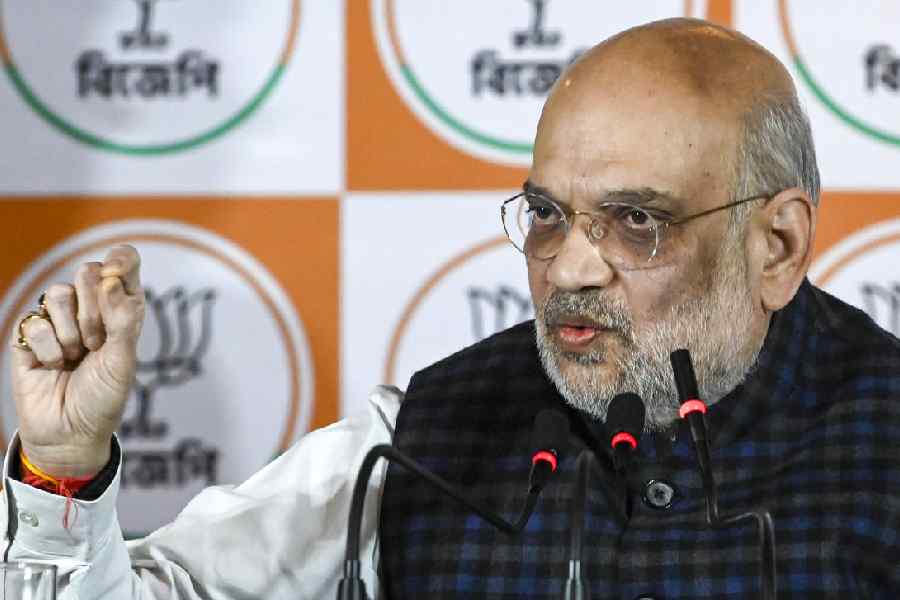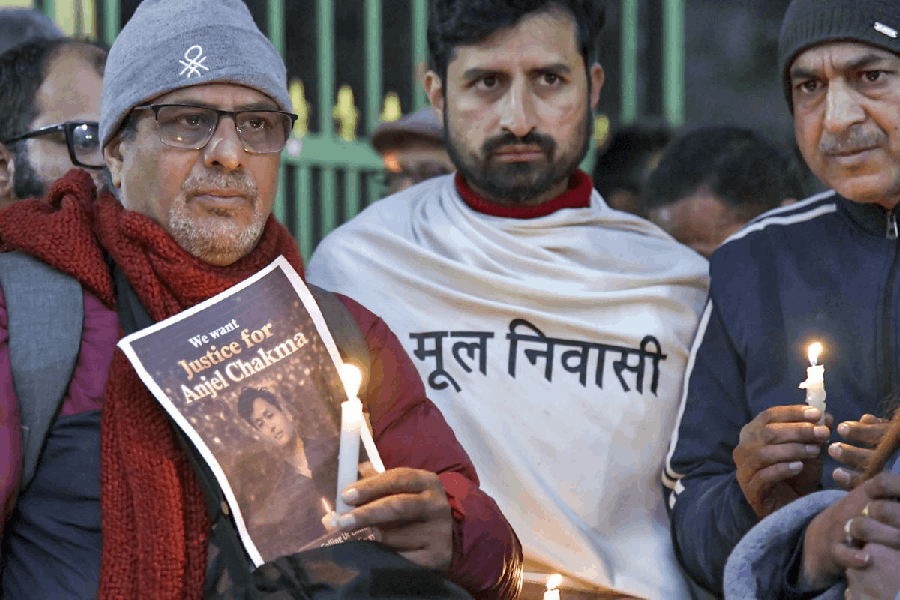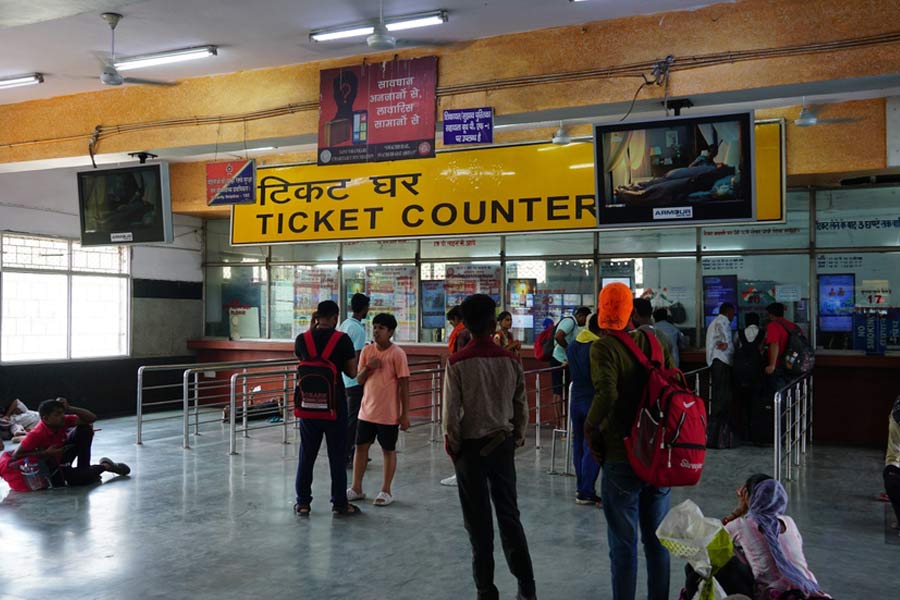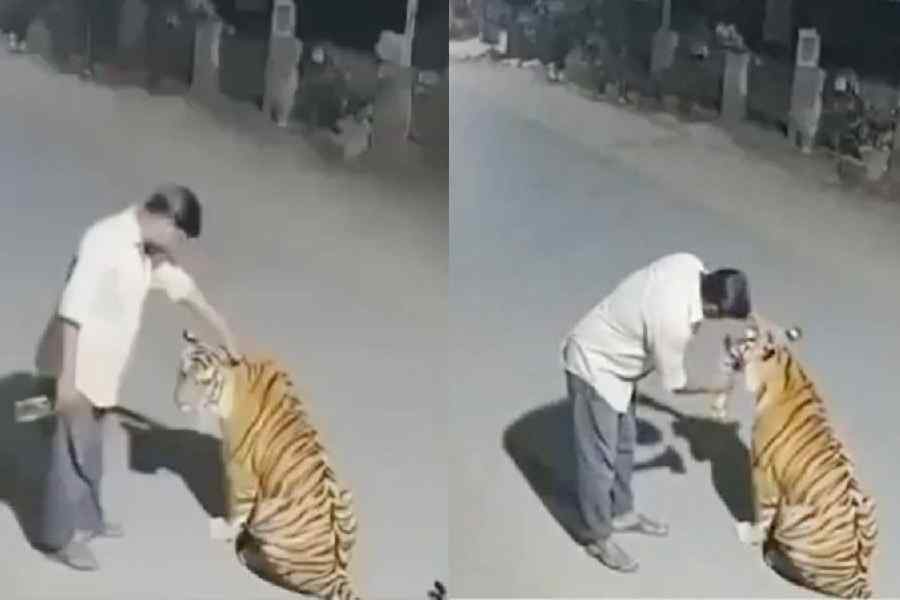Lalgarh, June 18: Two kilometres into the march to Lalgarh came the first bout of “action”.
“You have two minutes to disperse. Else, you’ll face action,” additional superintendent of police (Jhargram), Subhankar Sarkar, bellowed into a microphone, peering at the “human shield” of 2,000 villagers a little ahead of Malida village.
Tear gas and lathis took care of the resistance and two more human walls further up, but a little twist after sundown provided a hint of the challenges that lie ahead.
The 300 CRPF men and 100 district riot police who began their march from Pirakata at 4pm had advanced 8km to Bhimpur — almost halfway to Lalgarh — by 6.30 when dusk fell. The forces decided to push back 2km and halt for the night by the roadside at Koima.
Some of them retreated another 1km to Tirlakhali. Here, as they were setting up camp around 7, about a dozen shots rang out from the paddy fields at short intervals.
The troops immediately fell to the ground, pointing their light machine guns at the direction of the shots. But soon after, the Maoists’ guns fell silent. “The Maoists were trying to gauge our reaction,” an officer said. “But we did not retaliate.”
The decision to launch the long-awaited operation came at a meeting yesterday between home secretary Ardhendu Sen, state police chief Sujit Sarkar and district officials at the West Midnapore police lines. Chief minister Buddhadeb Bhattacharjee stamped his approval when Sen reported to him after returning from Midnapore.
At 8am, a 700-strong force left Midnapore town for the Pirakata police camp and after a series of meetings, attended by deputy inspector-general (Midnapore range) Praveen Kumar and district superintendent of police Manoj Verma, it was decided that 400 personnel would set out on foot.
The original decision to travel in vehicles was changed because tree trunks had been placed on the route and the road dug up at places.
The force had removed several tree trunks by the time it faced the human shield at Malida. When the two minutes were up, the police fired a few shots in the air and lobbed over 50 tear-gas shells. As the smoke began to sting their eyes, the villagers began breaking up.
That was the cue for the lathi-wielding riot police to charge those still lingering. As men and women ran helter-skelter, they were chased and thrown to the ground. Five women lay in the paddy fields after being beaten by the police.
Lakshmi Soren, 40, said: “There were no policewomen. We were beaten up by the policemen. Many fell unconscious.”
An officer justified the action, citing how Lalgarh’s villagers had held the force hostage for eight months. “We wanted to act but our superiors tied our hands. Finally we’ve got the opportunity.”
Then began a 30-minute “sanitisation” of Malida, a further kilometre up from the resistance site. Policemen entered homes, searching for suspects and beating up anyone who came their way.
At 5.30, the march resumed towards Tirlakhali, 2km away. Here also residents offered resistance — much weaker than the previous one — and this village too was sanitised, though in a more cursory manner.
A small crowd blocked the road in Bhimpur and was driven away easily. But by now the police were ready to rest for the night.
“We did not face trademark Maoist offensive on the first day,” home secretary Sen said in Calcutta in the evening. “No shots were fired at our forces either.”
But he spoke too soon, as the Maoists’ warning shots at Tirlakhali showed.










